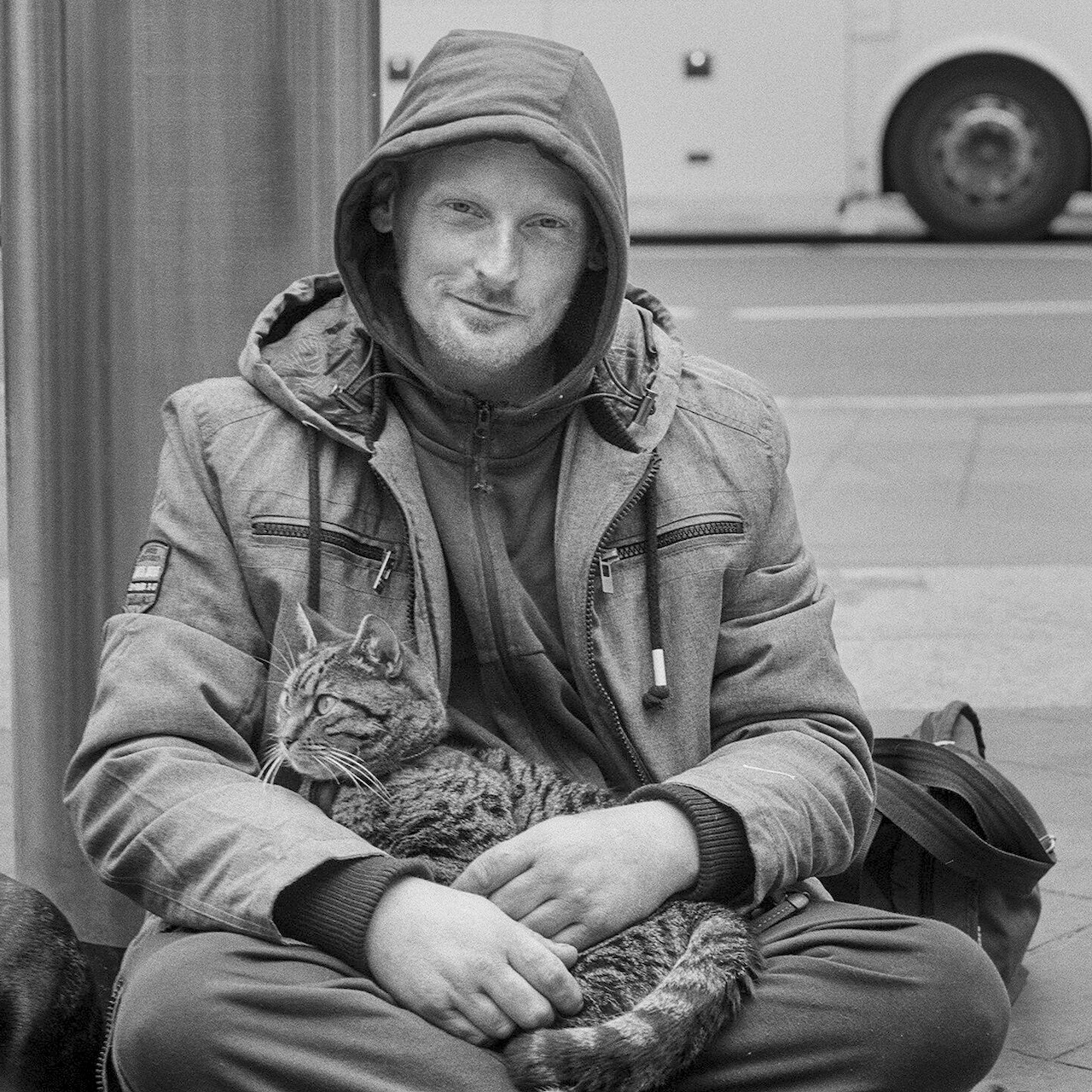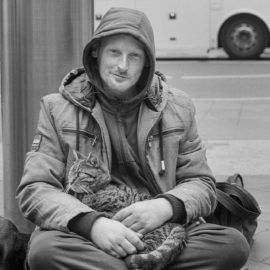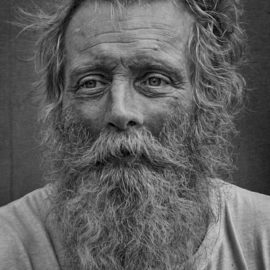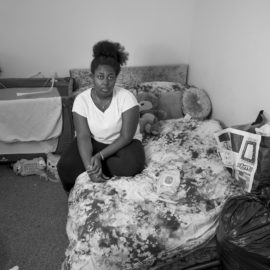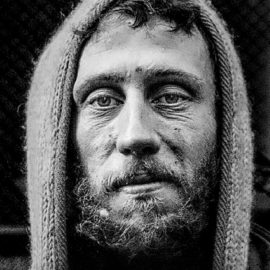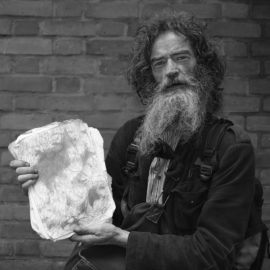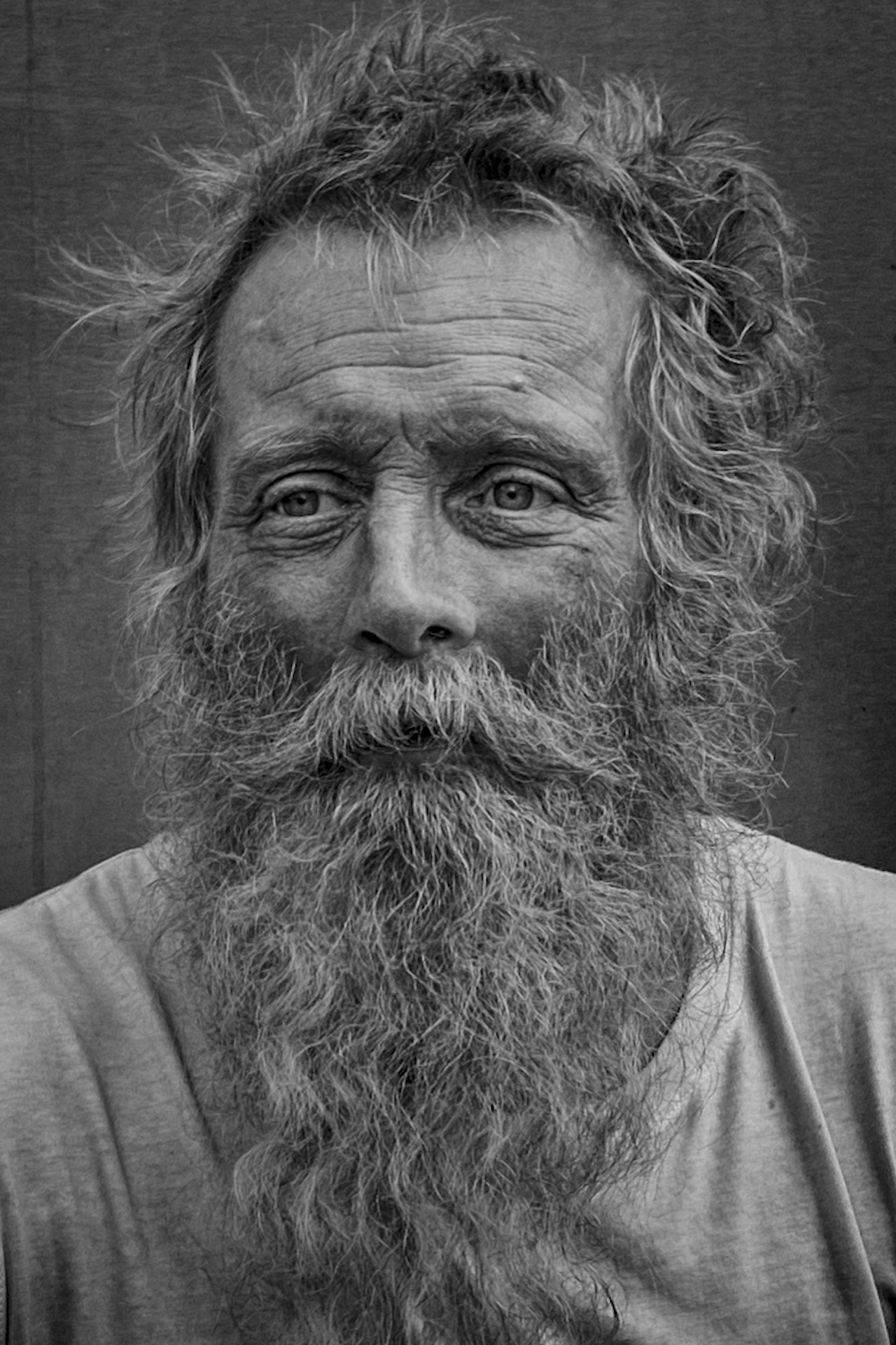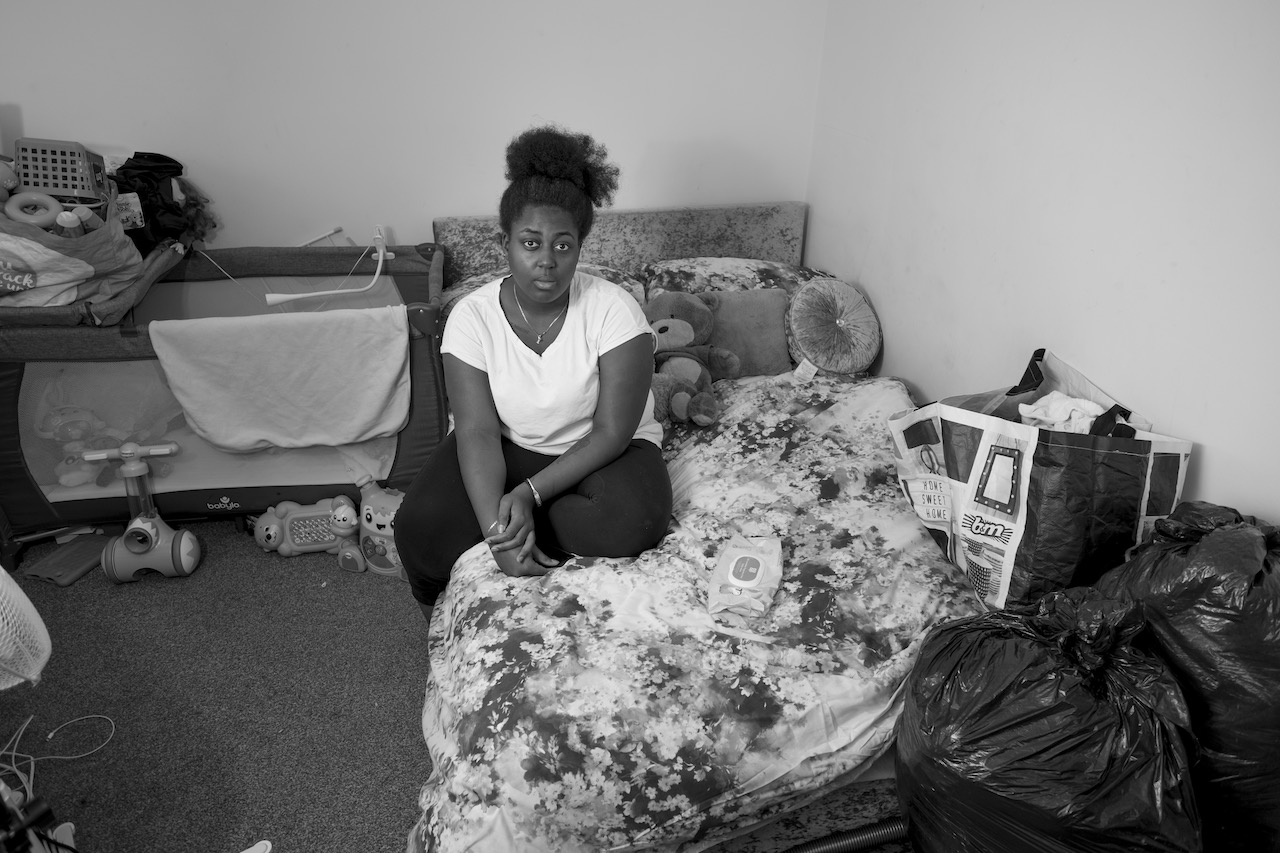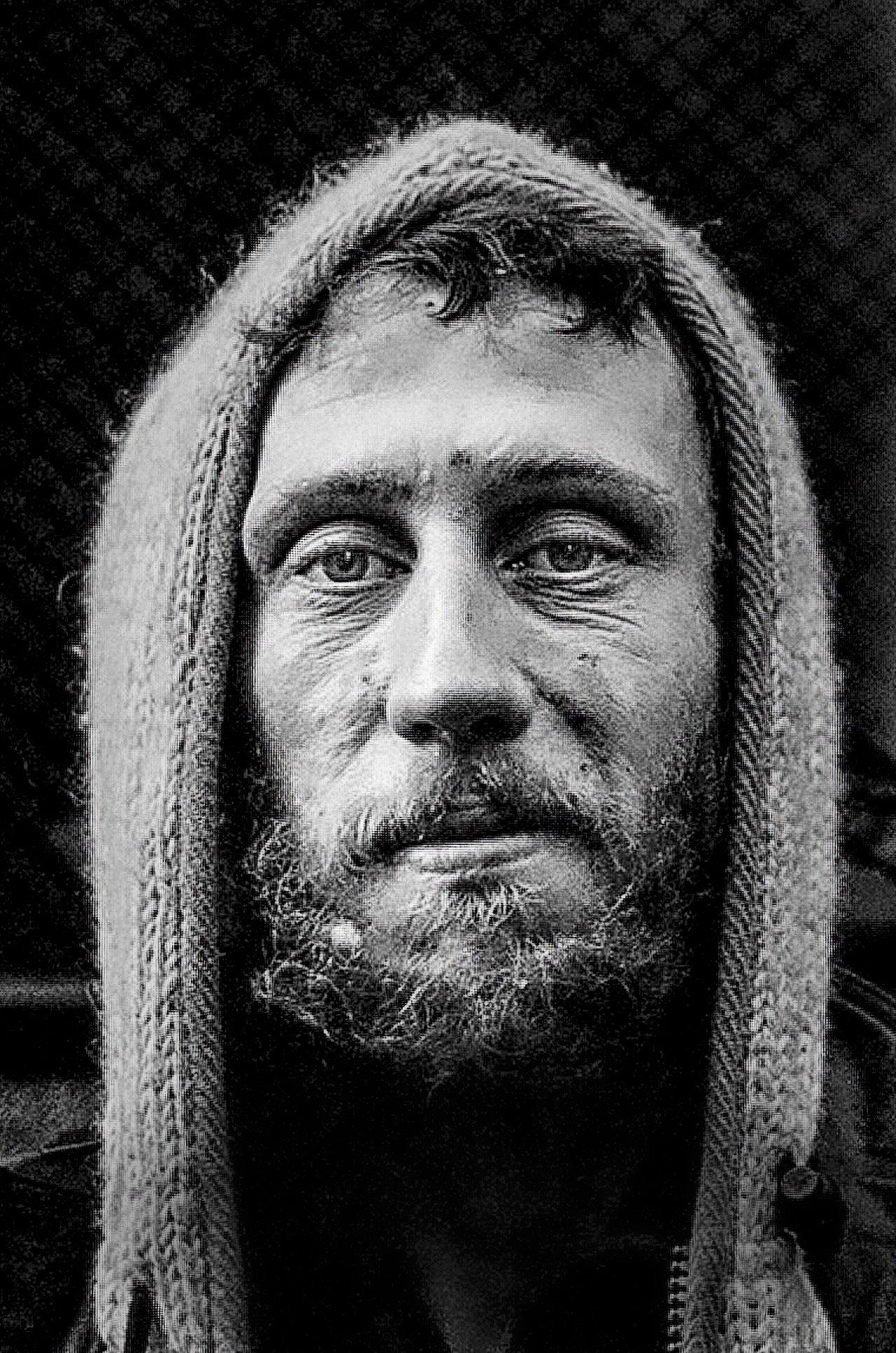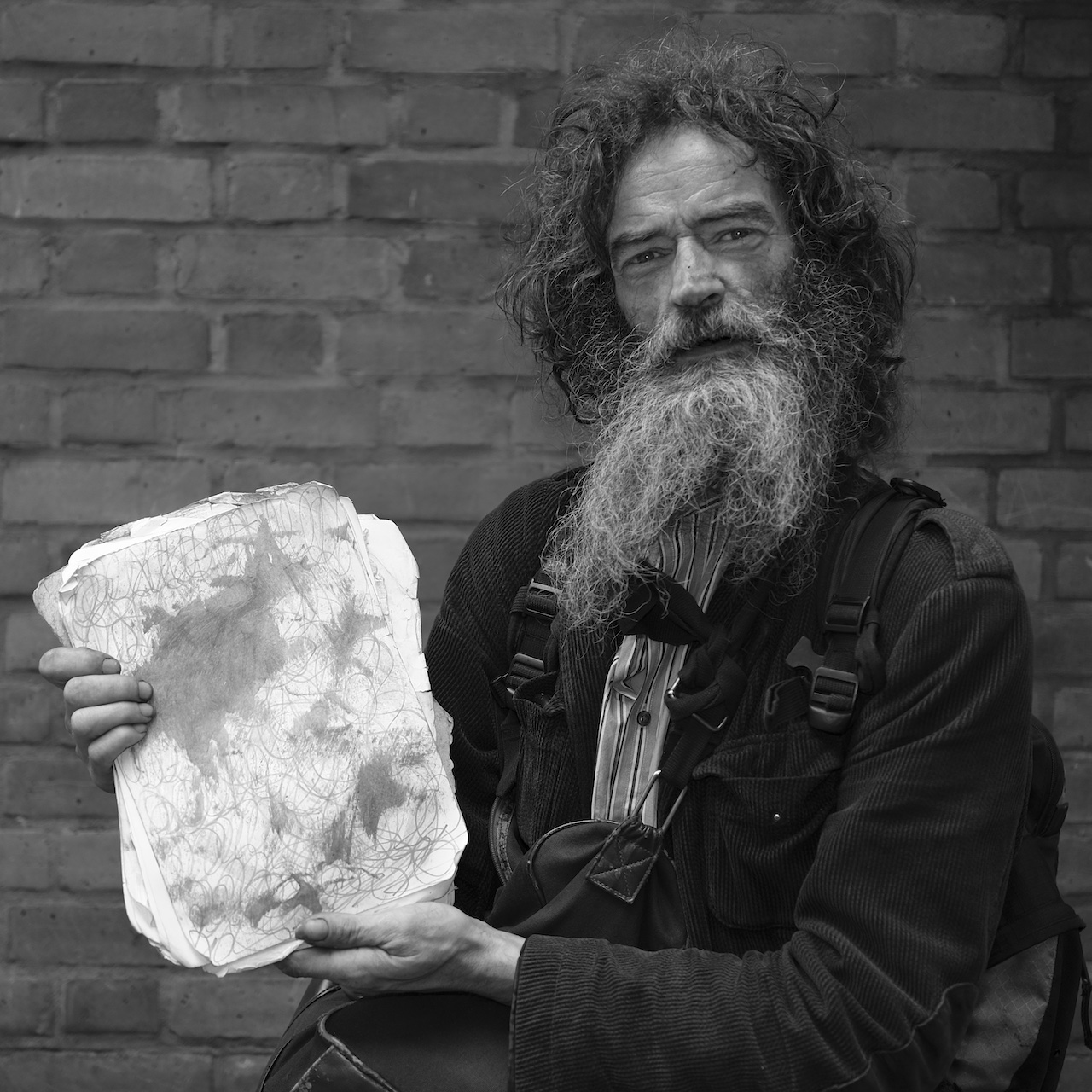A new book of portraits reveals the reality of experiencing homelessness in the UK
Sam 'the cat man' became addicted to heroin and crack cocaine and battled serious addiction on the street for around three years. Remarkably, through strength of will, he finally managed to kick the habit due to his love of his pets. It became a choice between feeding his drug habit or looking after his pets and he chose the welfare of his pets over his drug addiction and managed to get clean of drugs. © Marc Davenant.
Source:
